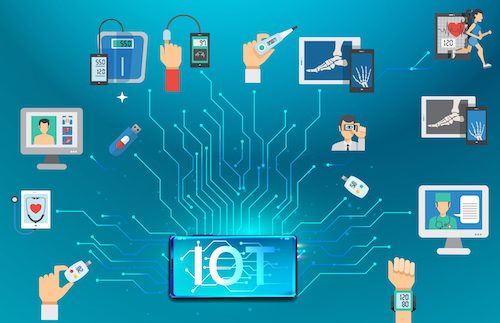The Internet of Medical Things (IoMT) is revolutionizing the healthcare industry by connecting medical devices, wearables, and healthcare systems through the internet. This interconnected network offers a multitude of benefits and opportunities for healthcare providers and patients alike. However, along with these benefits, IoMT also brings its fair share of challenges. This article explores the benefits and challenges of IoMT in the healthcare industry, shedding light on its potential and the hurdles that need to be overcome.
Benefits of IoMT:
Improved Patient Care and Outcomes
One of the primary benefits of IoMT is the ability to enhance patient care and outcomes. With IoMT devices and sensors, healthcare providers can remotely monitor patients’ vital signs, collect real-time data, and intervene promptly when necessary. This real-time monitoring enables early detection of health issues, facilitates preventive care, and allows for personalized treatment plans.
Enhanced Efficiency and Streamlined Workflows
IoMT has the potential to streamline healthcare workflows and improve operational efficiency. Connected devices and systems enable seamless sharing of patient information, reducing the need for manual data entry and minimizing errors. Healthcare providers can access patient data quickly, collaborate with multidisciplinary teams, and make informed decisions. Automated alerts and notifications can also help optimize processes, such as medication management and appointment scheduling. The result is improved efficiency, reduced administrative burden, and better utilization of healthcare resources.
Remote Patient Monitoring and Telemedicine
IoMT facilitates remote patient monitoring, allowing healthcare providers to monitor patients’ health conditions without physical presence. This is particularly beneficial for patients with chronic conditions or those in remote locations. With IoMT devices and wearables, patients can track their vital signs, symptoms, and adherence to treatment plans, providing healthcare professionals with valuable data for remote assessment. Additionally, IoMT enables telemedicine consultations, enabling patients to receive medical advice and care through video conferencing, saving time and reducing the need for in-person visits.
Early Detection and Prevention
Through continuous monitoring and data analytics, IoMT enables the early detection of health issues and potential complications. By analyzing data patterns and using predictive algorithms, healthcare providers can identify warning signs and intervene before a condition worsens. This proactive approach allows for timely preventive measures, reducing the risk of emergency situations and enabling early intervention to prevent disease progression. IoMT thus holds the potential to shift healthcare from a reactive model to a more proactive and preventive approach.
Challenges of IoMT:
Data Security and Privacy Risks
One of the major challenges of IoMT is ensuring the security and privacy of patient data. With the vast amount of sensitive health information being transmitted and stored, there is an increased risk of data breaches and unauthorized access. Healthcare organizations must implement robust security measures, including encryption, access controls, and secure data storage, to protect patient privacy. Additionally, compliance with data protection regulations, such as HIPAA in the United States, adds another layer of complexity and responsibility for healthcare providers and technology vendors.
Interoperability and Standardization
Interoperability and standardization pose significant challenges in the IoMT landscape. The integration of diverse devices, systems, and platforms from different manufacturers can be complex and hinder seamless data exchange. Lack of standardized protocols and interfaces makes it difficult to achieve interoperability, limiting the full potential of IoMT. Healthcare organizations and technology vendors need to collaborate and establish common standards to ensure compatibility and interoperability between devices and systems, enabling effective data sharing and collaboration across the healthcare ecosystem
Regulatory and Legal Considerations
IoMT is subject to various regulatory and legal considerations that need to be addressed. Medical device regulations, data protection laws, and patient consent requirements vary across jurisdictions, posing challenges for global implementation of IoMT solutions. Healthcare organizations and technology developers must navigate these regulatory frameworks, ensuring compliance and addressing any legal implications related to data ownership, liability, and consent. Adhering to ethical guidelines and maintaining transparency in data collection and usage are crucial to building trust and ensuring responsible deployment of IoMT technologies.
Technological Infrastructure and Integration
The successful implementation of IoMT relies on robust technological infrastructure and seamless integration with existing healthcare systems. Upgrading infrastructure, including networking capabilities, data storage, and processing power, may be required to handle the increased volume and complexity of data generated by IoMT devices. Furthermore, integrating IoMT solutions with electronic health record (EHR) systems and other healthcare information systems is essential for leveraging the full potential of IoMT. This integration poses technical challenges, requiring careful planning, interoperability testing, and system upgrades to ensure smooth integration and data flow.


